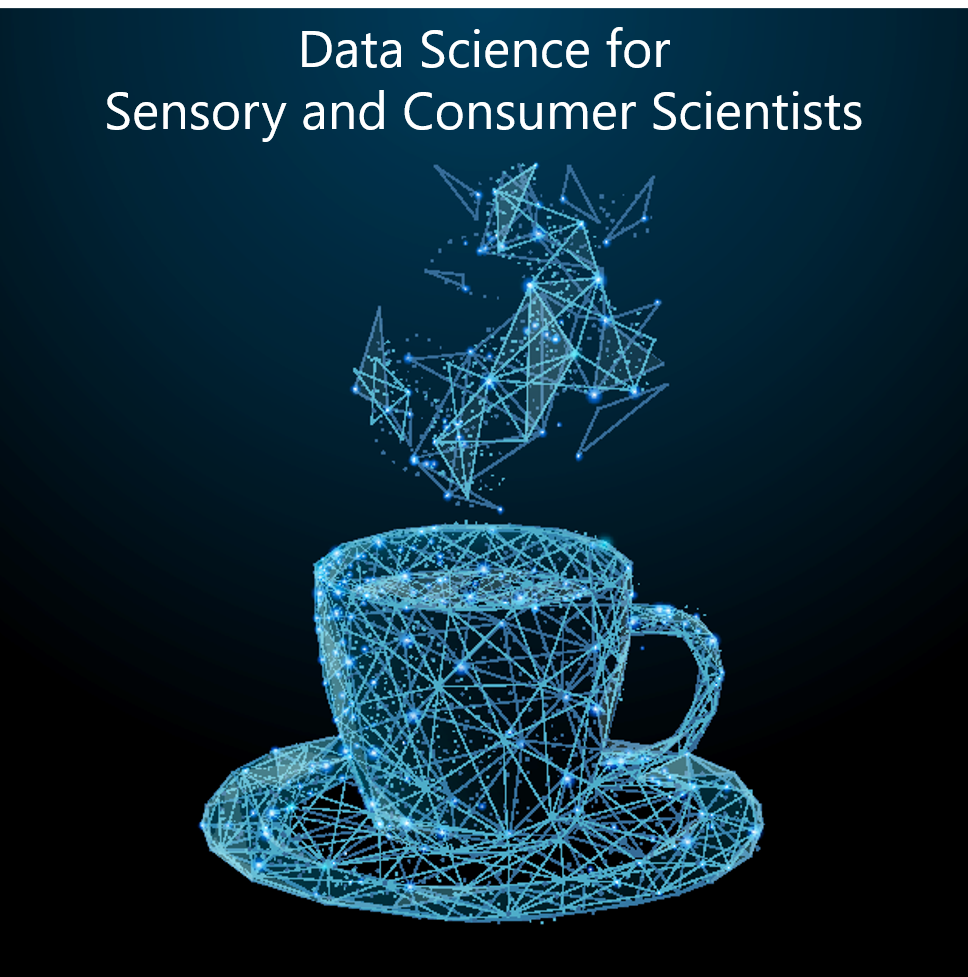Data Science for Sensory and Consumer Scientists
2022-11-09
Preface
Welcome to the website for Data Science for Sensory and Consumer Scientists, a book in development and under contract for CRC Press.

Who Should Read This Book?
This book is for practitioners or students of sensory and consumer science who want to participate in the emerging field of computational sensory science. This book assumes little to no coding experience. Some statistical experience will be helpful to understand the examples discussed.
How Is This Book Structured
It is important to start by saying that the aim for this book is not to explain in depth what the different sensory and consumer methods are, nor to explain how the data gathered from these methods should be analyzed. For such topics, other excellent books including Lê and Worch (2018), OTHER REFS for example are available.
Instead, the aim is to explain the workflow sensory and consumer scientists can adopt to become more efficient, and to push their analyses further. The workflow proposed includes many steps including:
- Setting up the test both from an experimental design and an analysis perspective (e.g. setting up projects, collaboration tools, etc.);
- Data collection and data processing through data cleaning, data manipulation and transformation, and data analysis;
- Communication of the results (e.g. visualization, reporting, communication).
For this journey, R is used as the preferred platform to assist us in this data science journey. Moreover, this book is written following a restaurant’ card’ menu with four main sections:
- Apéritifs provides tips, tricks, and tools for the readers to get accustomed to the overall style of this book, an excellent way to make you salivate on what’s about to come!
- Hors D’Oeuvres aims in describing in more depth some of the tools that will be used frequently all along the book. Just a neat way to open your appetite!
- Bon Appétit is an illustration of the workflow proposed applied to a real-case study on biscuits. This is the main course that should satisfy your cravings!
- Haute Cuisine is an introduction of the current workflow to other types of data and/or more advanced analysis, a particularly tasty chapter for the most gourmand.
- Digestifs extends to other relevant topics that did not fit within this book’s scope, but can be relevant for many readers. This is a perfect way to finish the journey and hopefully give a good taste on new possibilities!
How To Use This Book
This book is meant to be interactive, with the reader ideally typing and running all of the code presented in the book. Computer languages are like human languages in that they need to be practiced to be learned, so we highly recommend the reader actually typing all of the code from these parts, running it, and verifying they obtain the results shown in the book. To help with this practice, we have created a special GitHub repository that contains folders called work_along and sample_code. Please see Chapter 2 for guidance on how to get started with R and GitHub. In the sample_code folder, we have included the code as presented in the book, while in the work_along folder we have provided blank files for each chapter that load the libraries1.